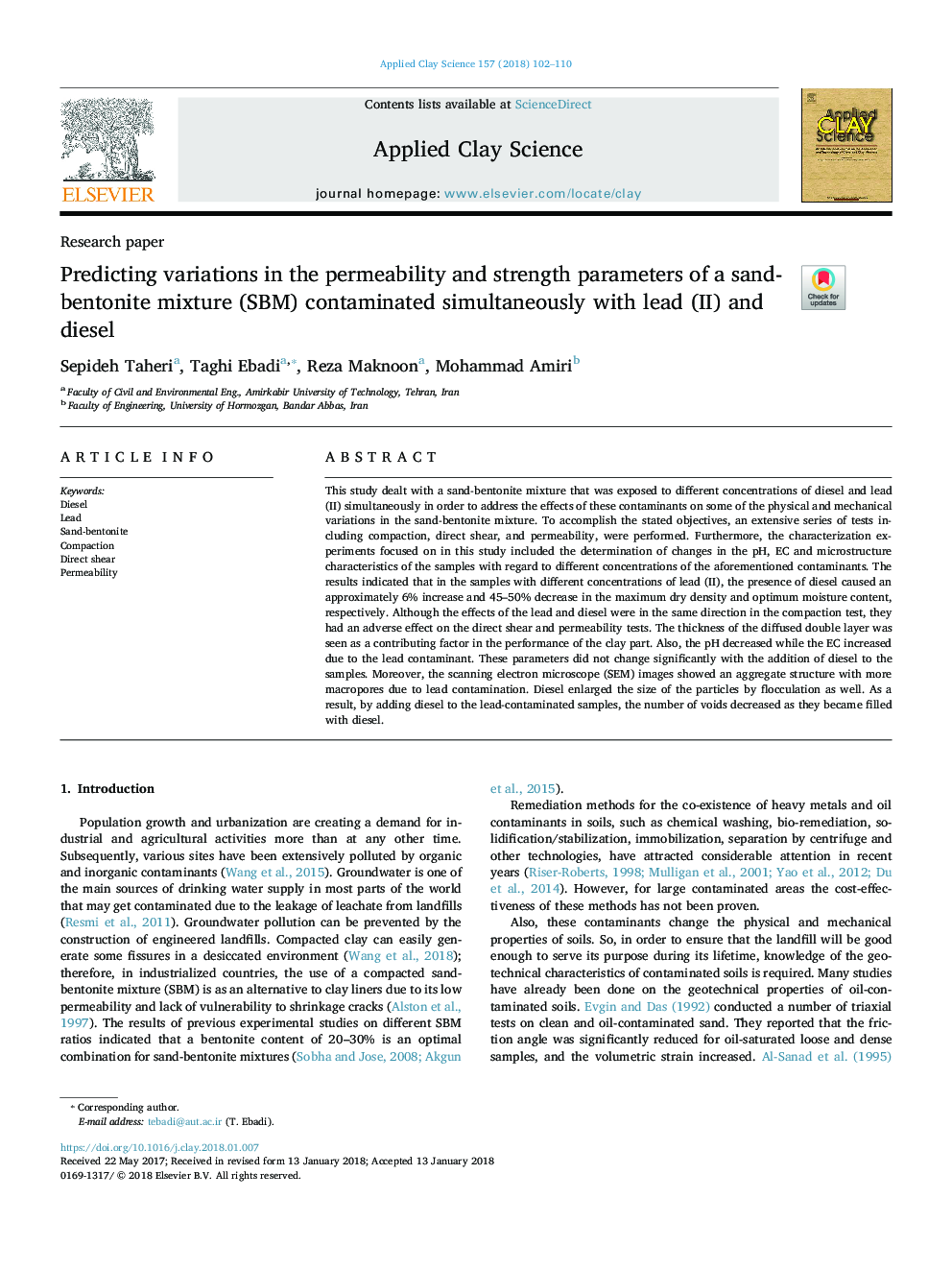| Article ID | Journal | Published Year | Pages | File Type |
|---|---|---|---|---|
| 8046032 | Applied Clay Science | 2018 | 9 Pages |
Abstract
This study dealt with a sand-bentonite mixture that was exposed to different concentrations of diesel and lead (II) simultaneously in order to address the effects of these contaminants on some of the physical and mechanical variations in the sand-bentonite mixture. To accomplish the stated objectives, an extensive series of tests including compaction, direct shear, and permeability, were performed. Furthermore, the characterization experiments focused on in this study included the determination of changes in the pH, EC and microstructure characteristics of the samples with regard to different concentrations of the aforementioned contaminants. The results indicated that in the samples with different concentrations of lead (II), the presence of diesel caused an approximately 6% increase and 45-50% decrease in the maximum dry density and optimum moisture content, respectively. Although the effects of the lead and diesel were in the same direction in the compaction test, they had an adverse effect on the direct shear and permeability tests. The thickness of the diffused double layer was seen as a contributing factor in the performance of the clay part. Also, the pH decreased while the EC increased due to the lead contaminant. These parameters did not change significantly with the addition of diesel to the samples. Moreover, the scanning electron microscope (SEM) images showed an aggregate structure with more macropores due to lead contamination. Diesel enlarged the size of the particles by flocculation as well. As a result, by adding diesel to the lead-contaminated samples, the number of voids decreased as they became filled with diesel.
Related Topics
Physical Sciences and Engineering
Earth and Planetary Sciences
Geochemistry and Petrology
Authors
Sepideh Taheri, Taghi Ebadi, Reza Maknoon, Mohammad Amiri,
